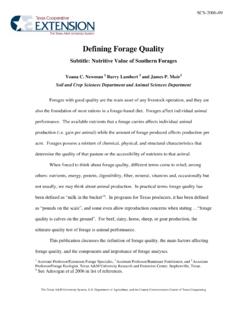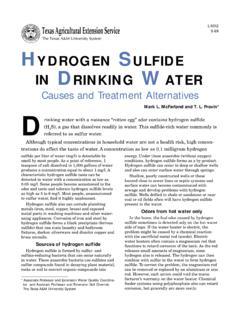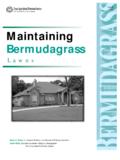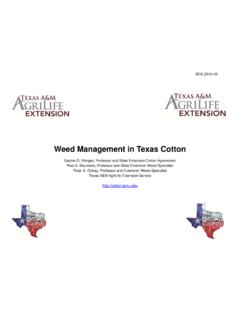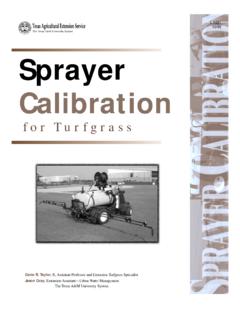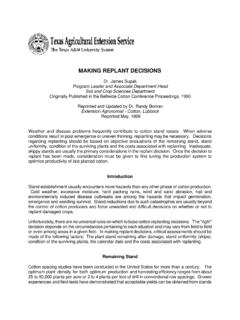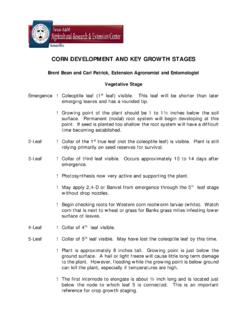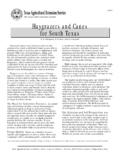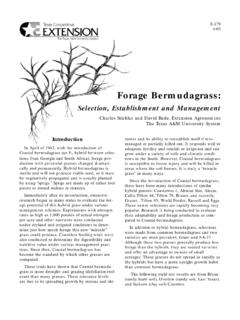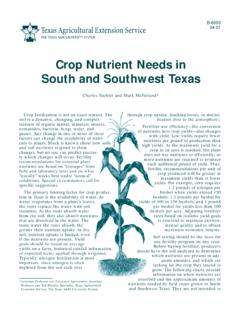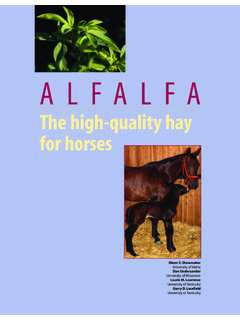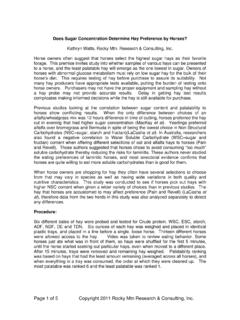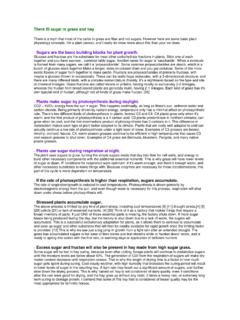Transcription of Texas Agricultural Extension Service
1 Texas Agricultural Extension Service .. The Texas A&M University System .. Pasture and hay for horses Donald J. Dorsett Associate Professor and Extension Forage Specialist vtvtvtvt The horse is by nature a grazing animal. The nutrition Warm-season annuals (millet, sorghums, sudans, and (protein, energy, minerals, and vitamins) provided by crabgrass) provide high quality grazing or hay for many good pasture can meet the daily requirements of most horse owners. The sorghums and sudans are not recom- horses . Pasturage also provides an area for exercise mended for pasture, however. The Texas A&M Veteri- necessary for healthy horses . When pasture is not avail- nary Diagnostic Laboratory has diagnosed cases of sor- able, good quality hay should constitute 50% of most ghum cystitis in horses grazing pastures of sorghum an horses daily diet.
2 The fiber from pasture or hay pro- d/ or sudans. This condition is characterized by urinary vides an important factor in normal digestion for the tract problems and loss of control of the rear quarters. horse. Growing animals, working animals or horses in Pearl millet does not cause this problem but can build training require less fiber and more energy in their diet. high levels of alkaloids due to moisture stress. Warm- season annuals provide a large volume of high quality Texas and the South is fortunate to have many forages forage over a short period but require yearly plowing to use for pasture and/or hay production. The long warm- and planting. season and fairly mild winters allow an individual to select a variety of forages to provide near year- around Perennial cool-season grasses are limited in Texas .
3 At grazing on pasture. Drought and extremely cold tem- high elevations in West Texas and the Panhandle, wheat- peratures are two factors that limit growth and keep in- grass and fescues provide pasture. Fescue can also be dividuals from having truly year-around productive pas- used in North-central and East Texas in bottomlands and tures. selected poorly drained sites plus the upper Gulf Coast area. Fescue is not generally recommended as pasture The warm-season perennial grasses like bermudagrass, or hay for mares because of a toxicity problem unless bahiagrass, introduced bluestems, buffelgrass, and na- an individual plants an endophyte free variety of im- tive grasses provide the bulk of the pasture for horses proved fescue.
4 In the milder areas of the state, fescue from April through November. Since they are peren- can furnish quality grazing during the fall, winter, and nial, once established , they provide dependable pas- spring months. tures for years. Their quality is highest in the spring and early fall but tend to drop in quality during midsummer. Annual cool-season grasses are used commonly by plant- With proper fertility and management, they can be very ing in September-October on either a prepared seedbed productive as either pasture or hay. or sodseeded. These include wheat, oats, barley, rye, Texas Agricultural Extension Service Edward A. Hiler, Interim Director The Texas A&M University System College Station, Texas Educational programs conducted by the Texas Agricultural Extension Service serve people of all ages regardless of socioeconomic level, race, color, sex, religion, handicap or national origin.
5 Triticale and ryegrass. Matua prairie bromegrass is in this Effect of Frequent Cutting on Yield and Quality category for much of the state. These grasses are highly of Coastal Bermudagrass Hay dependent upon fall moisture for fall and winter pas- (Georgia Coastal Plains Section). ture. They produce a high quality forage but are gener- ally limited by volume of production until spring growth Clipping Percent Percent starts. Frequency Crude Crude Percent (week) Tons/A Protein Fiber Leaf Legumes and clovers may be added to summer or win- ter pastures to improve the quality of forage available. 3 horses , however, tend to prefer grasses before legumes 4 so mixtures should always be maintained for pasture. 6 Pure stands of alfalfa or clovers are best used for hay 12 production.
6 Horse pasture should always be managed to maintain Fertility is the prime requisite for high production in a high quality grazing. Moderate nitrogen fertility should hay-making operation. Almost any forage plant re- be applied at 45 day intervals during the growing sea- sponds to moderately high fertility levels with increased son to maintain higher protein levels. Excess growth production. Fertility increases the amount of protein in during periods of rapid growth should be mowed to pre- the plant and total pounds of protein per acre. But the vent patches of old growth in the pasture. Pastures effect of fertility on protein is not as important as is should be dragged or harrowed occasionally during the plant age.
7 In Coastal bermudagrass cut at the same stage, grazing season to breakup and spread manure. 50 pounds of nitrogen per acre may produce 8 to 9 per- cent protein hay, while 400 pounds of nitrogen per acre HAY PRODUCTION may produce only 12 to 13 percent protein hay. This may vary considerably, depending on growth stage. For hay production, a balanced fertilizer in the spring with nitrogen applications following each cutting are required for top production and quality. In sandy soil, Effect of Difference Nitrogen Rates on potassium fertility is almost as important as nitrogen Yield and Protein Content of Coastal fertility in maintaining a productive forage stand. Ap- ( Texas A&M). ply adequate amounts of potassium all at one time in the spring or in split applications like nitrogen through- Lb/N/Acre Yield in Tons Protein out the growing season.
8 0 Hay can be made from almost any type of forage grown, 100 whether it is grass or legume. The basic principle be- hind good, high quality hay production is to cut the plant 200 at a growth stage when it is high in protein and high in 400 digestibility. Age of the plant is the prime factor that 600 determines plant digestibility. All grasses and legumes are high in quality until the plant starts seedhead forma- tion. Once this starts, the plant changes its style of growth. New leaf development ceases, and the plant Fertility has much higher impact on total production per starts forming a seed stem and seedhead. At this point acre. Any grass responds to higher nitrogen rates. the plant starts building fiber, thus digestibility and per- Coastal bermudagrass will produce from 12,000 to cent crude protein start declining.
9 Any plant that goes 14,000 pounds of hay per acre with approximately 300. to full seedhead is considerably lower in protein and pounds of total nitrogen per acre. The relationship be- digestibility than it would be if cut in the boot or early tween production and fertility is almost direct as long as head stage. This principle of plant age has more to do growing conditions are adequate. Producing large with plant quality than does the fertility program. amounts of hay per acre is only possible where a good fertility program is followed.
